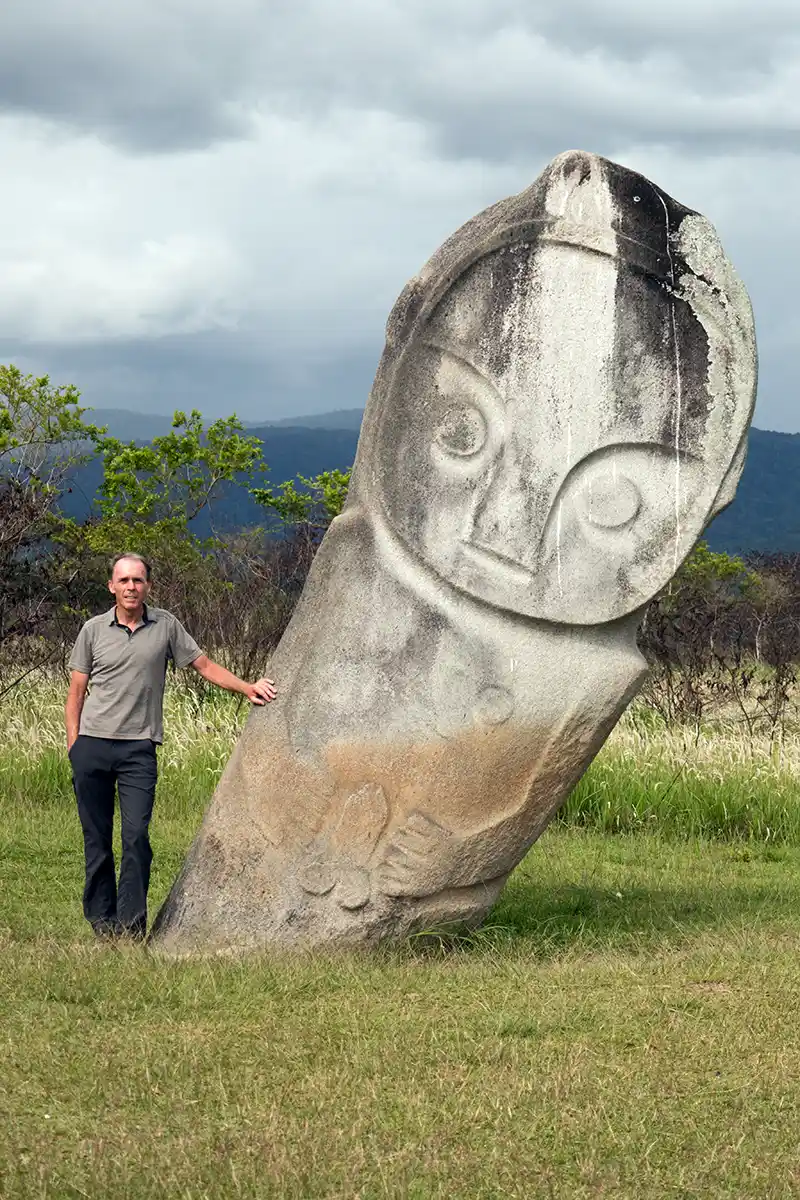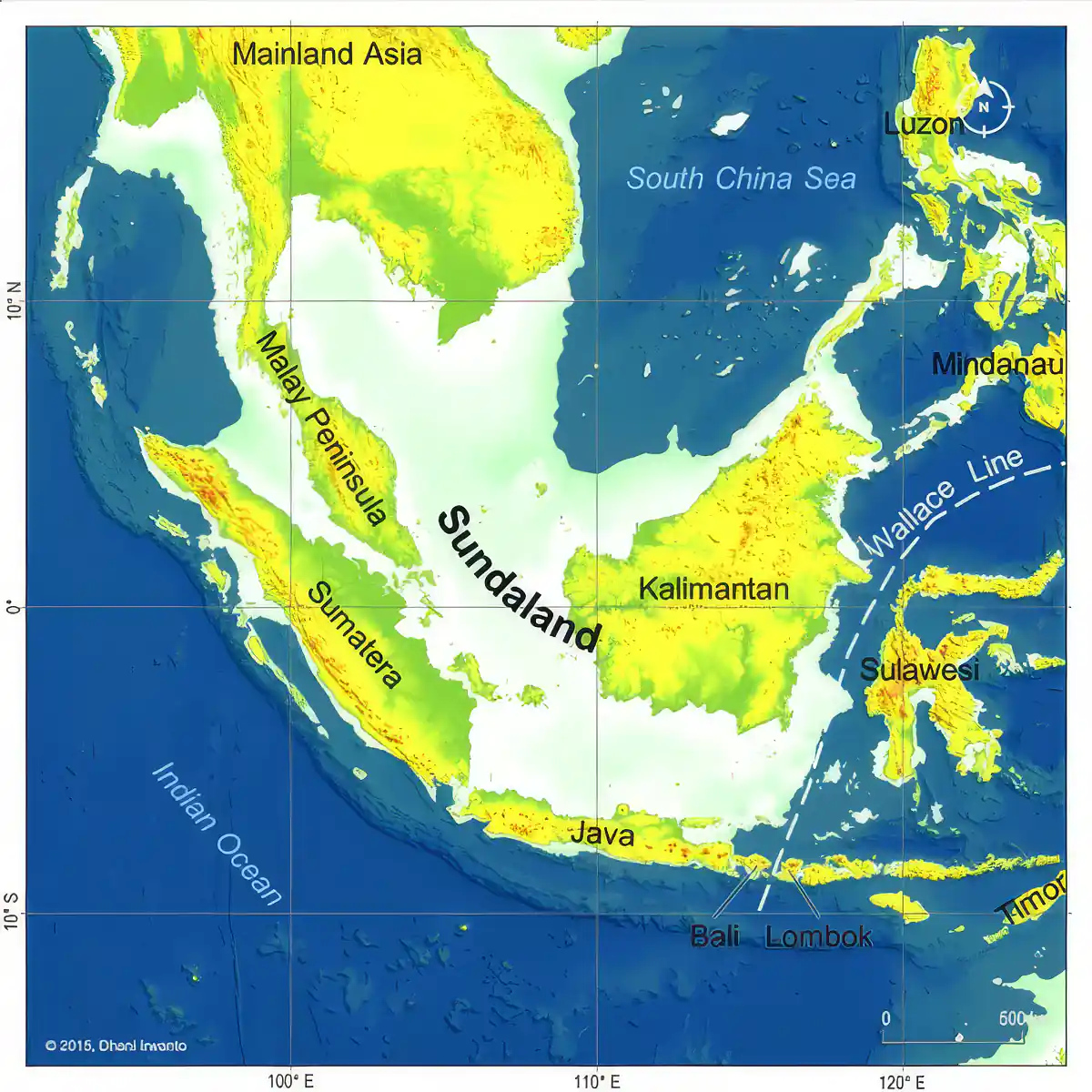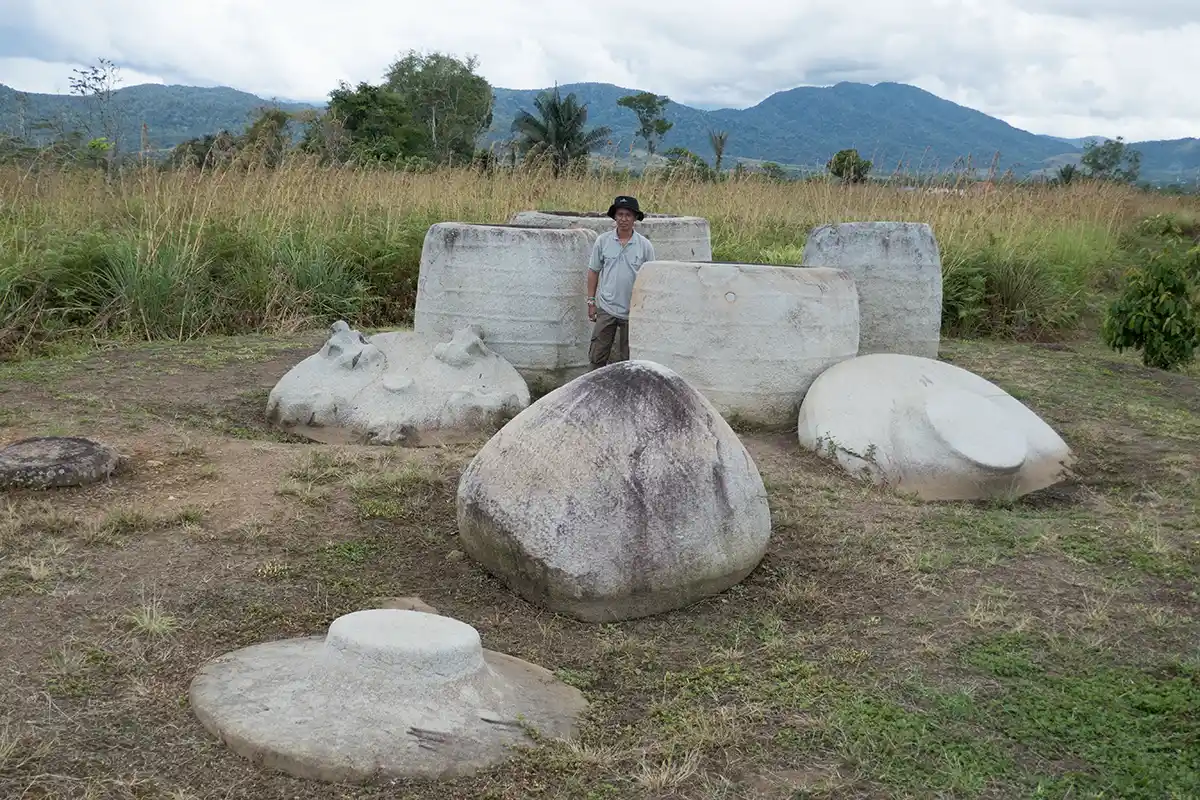Megaliths of Bada, Besoa and Napu valleys, Sulawesi Island
The matter of when, by whom, and for what reason the enigmatic megalithic artifacts of central Sulawesi were created is one of the world's greatest archaeological mysteries. Two theories - one plausible, the other highly speculative - can be considered.
Multidisciplinary evidence indicates that human settlement in Southeast Asia dates back at least 55,000 to 65,000 years. Until about 15,000 years ago, the sea level was around 125 meters lower than current levels. The area, now 60 meters under the Java Sea, was part of a Southeast Asian peninsular subcontinent known as Sundaland, which included the Malay Peninsula and the islands of Sumatra, Java, and Borneo. In contrast, the Sulawesi and the Philippines islands would have been visible and reachable by boat. This Sundaland landmass was exposed during most of the last glacial period between 110,000 and 15,000 years ago. The lower sea levels would have allowed land-based migration and sea travel within sight of land. During this period, probably between 50,000 and 30,000 years ago, humans first came to what is now the island of Sulawesi.
At the end of the LGM, or the Last Glacial Maximum 19,000 years ago, global warming caused sea levels to rise, and a vast land area was inundated. There were likely three significant episodes of accelerated sea level rise, approximately 14,500, 11,500, and 7,500 years ago. During or following these periods, the island of Sulawesi was formed, and any existing cultures there became isolated from the rest of Southeast Asia. It should be noted that much later arrivals by Austronesian groups into the islands of Southeast Asia (Eastern Indonesia) happened around 4500-6300 years ago when the sea levels were equal to present times and technology existed for extensive ocean voyaging to islands that were out of sight over the horizon—the origins of the mysterious megaliths on Sulawesi date from long before this time.
Four hundred megalithic artifacts are scattered randomly across the Napu, Besoa, and Bada Valleys of the Lore Lindu National Park. The artifacts are of several shapes, including statuary, enormous, mostly solid cylinders, and flattened stones with cup marks. All of the statuary forms - ranging in height from 2 feet to more than 15 feet - are minimalistic depictions of anthropomorphic and zoomorphic figures. None of the statues have legs; most have large and strangely shaped heads, and some have large genitalia or abstract geometric ornamentation. The sculptural style of the figures is unique in the world, with the closest resemblance being the equally enigmatic carvings found at San Augustin in Colombia. No mythological, anthropological, archaeological, ethnological, or historical research has provided insight into these statues' age, provenance, or purpose.
Equally mysterious are the enormous, primarily solid cylinders, locally called kalambas, which are also found throughout the three valleys. These kalambas, ranging in height from 5 to 10 feet and weighing multiple hundred pounds, are each carved from individual blocks of stone, and some, but not all, are accompanied by stone lids. Approximately 50-90% of the mass of each kalamba is solid stone, with the upper end being hollowed out, also in a cylindrical manner. Some hollowed-out sections have a single level, while others have two levels separated by a ridge. The difference in depth between the two levels usually is no more than 2 inches. Some kalambas have rings or zoomorphic and anthropomorphic designs carved on their sides; this is also true on some lids. It has been postulated that the cylinders and the flattened cup-marked stones may have been used for some mineral separation process, and granular gold is found in high concentrations in the surrounding areas. Due to their limited interior size and depth, the cylinders would not have been functional for bathing or burial.
What were these strange, near-solid, massive stone cylinders used for? Where, when, and how were they quarried? How were they transported from their unknown quarry sites to Central Sulawesi's thickly forested mountains and valleys? Who (or what) did all this, and why? The answers to these questions are unknown, the mystery unsolved.
But is there another avenue of exploration we may conduct to explain this mystery? Yes, let us look away from the earth and to the stars. While most university-trained archaeologists will scoff at this idea, might it be possible that the Sulawesi megaliths had an extraterrestrial origin? Surely this can be considered. Given that these megaliths are unique in the world, that their age, source of stone, style of ornamentation, method of transportation, and function are entirely unknown, perhaps some off-planet explanation is a possibility. Perhaps the enigmatic beings depicted on the stone statues were not human beings but scientists or miners from another world searching for gold.
Image galleries:
- Bada Valley, Sulawesi Photo Gallery
- Besoa Valley, Sulawesi Photo Gallery
- Napu Valley, Sulawesi Photo Gallery
For additional information and assistance with travel to the remote megalithic sites of Sulawesi Island, contact archaeologist Iksam Djorimi by email at

Martin Gray is a cultural anthropologist, writer and photographer specializing in the study of pilgrimage traditions and sacred sites around the world. During a 40 year period he has visited more than 2000 pilgrimage places in 160 countries. The World Pilgrimage Guide at sacredsites.com is the most comprehensive source of information on this subject.



